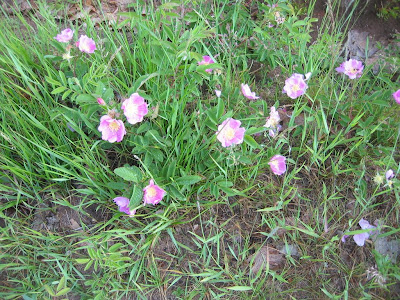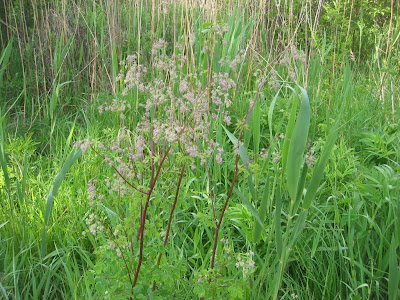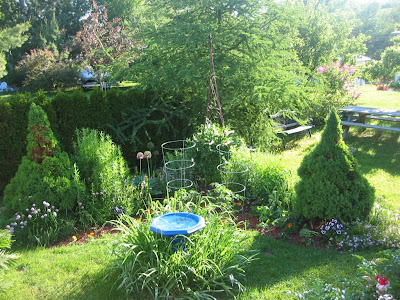




Tuesday, 8:00 AM. 52 degrees, wind WSW, light. The channel is wrinkled, the sky is overcast and it is raining lightly and looks as though it may do so all day, although the barometer predicts sunny skies.
Saint John’s wort, Hypericum kalmianum, is a common native summer flowering plant of fields and roadsides. There are over 300 species in the confusing genus, so without spending a lot of time I will call this one the species kalmianum, which grows around the great lakes. It is named for the 17th Century Swedish botanist Peter Kalm, who discovered it. His journal is fascinating, and gives real insight into pre-Revolutionary America. St. John’s wort has long been used in herbal medicine, and is much prescribed as a calmative in Europe. I have no personal experience with it.
The pink flowered plant is Crown Vetch, a legume much used in roadside construction plantings. It is extremely invasive, gets into everything, and should not be used.















































